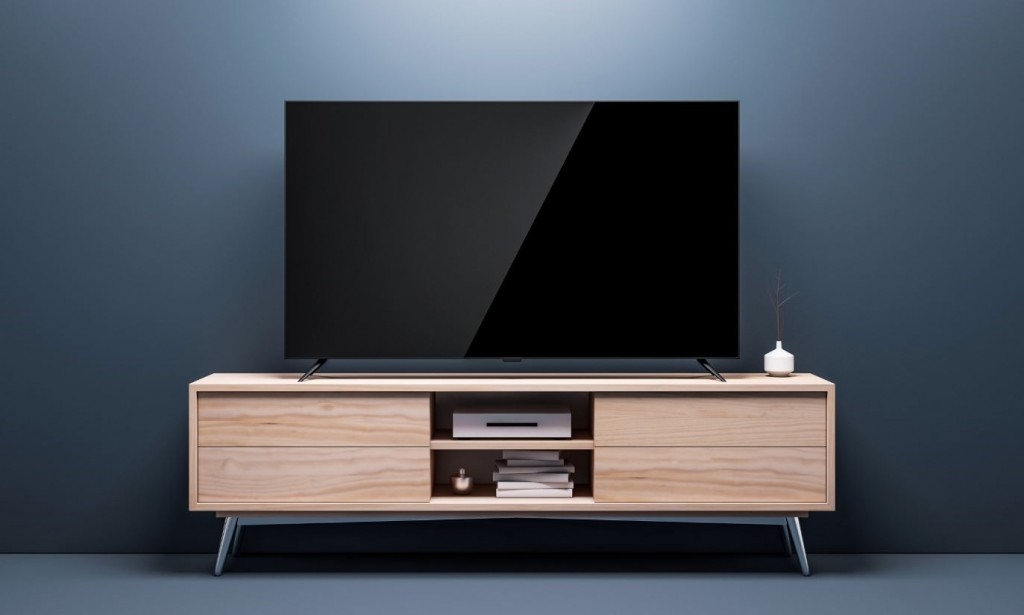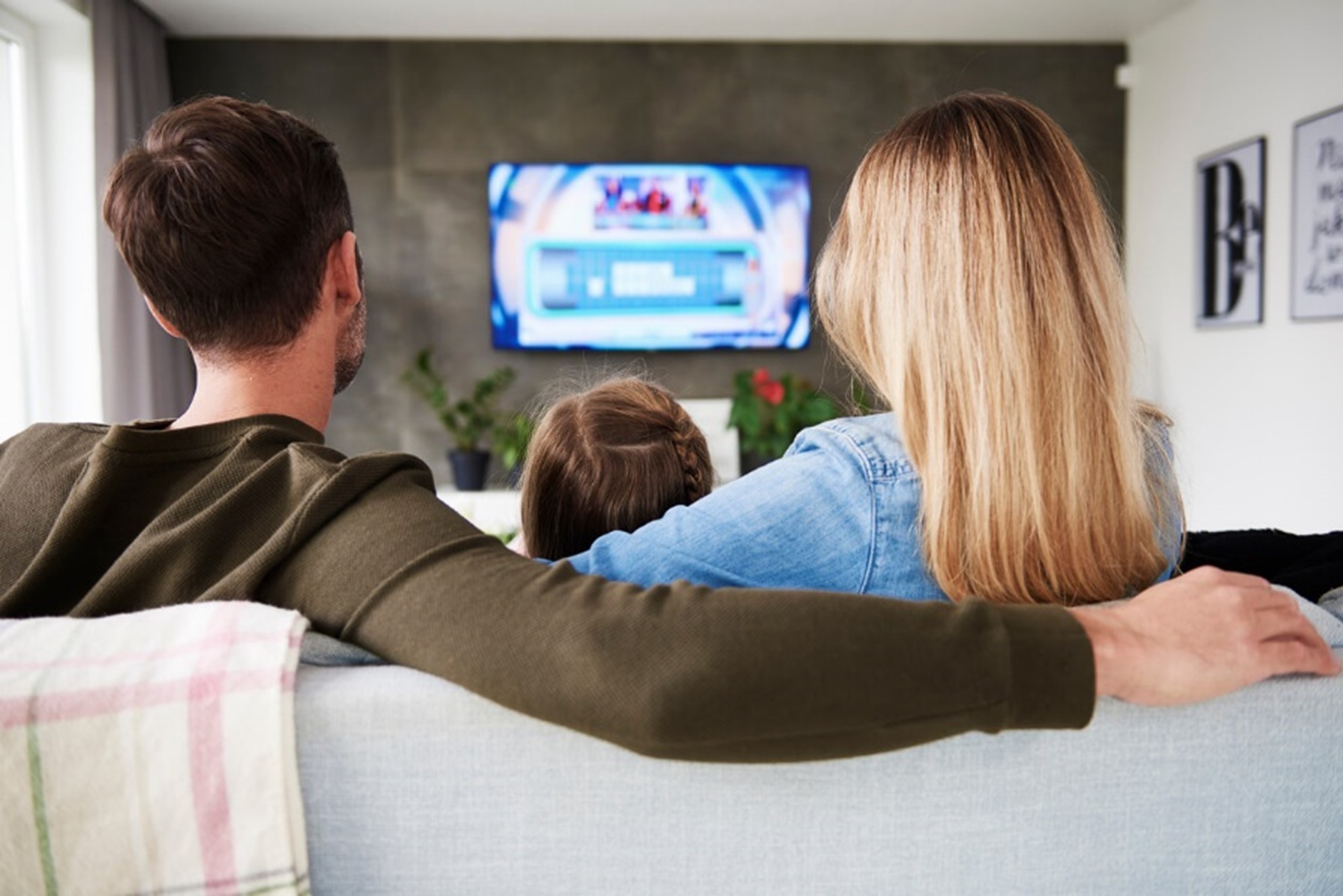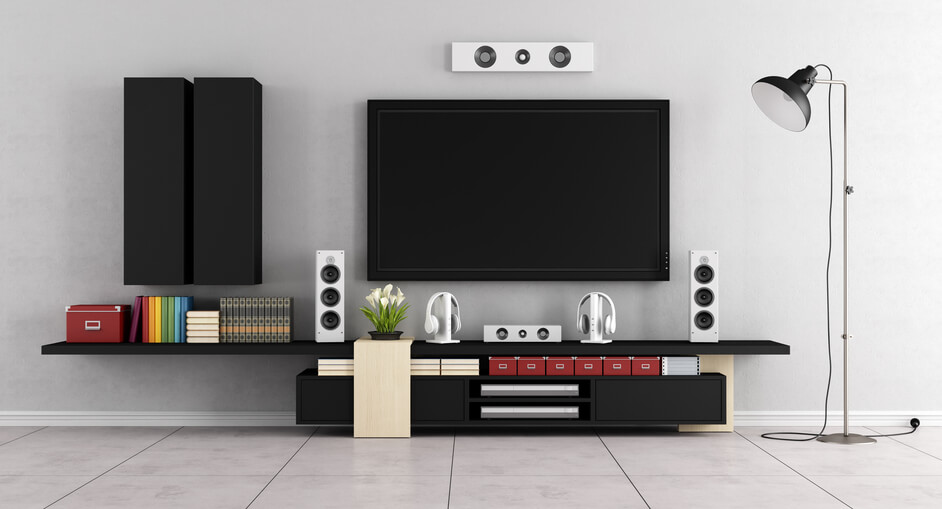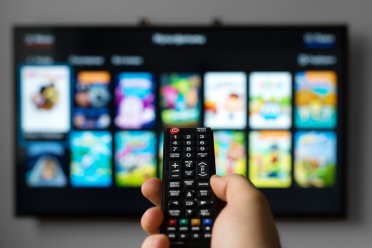We’ve seen all of these screen types in homes over the past decade, but which screen comes out on top, and which screen should you take with you into the roaring 20s? This guide to TV screens will answer all your questions and, once you’re ready to make a purchase, we can even recommend some great cheap 4K TV deals for you, whichever screen type you’re looking for.
LED TVs
Cheap LED TVs are our speciality, and to help you properly understand the virtues of television we’re going to briefly explain how each screen type works before we compare them. This will help you to understand why we think the QLEDs are better for quality than LEDs, although they might not be better for price.
LED stands for Light-Emitting Diode. These make light by moving electrons, and your television screen is peppered with lots of tiny LEDs creating the appropriate light intensity and colour for each section of your screen.
Thin screens are currently in fashion, and while an LED TV can be very thin, the LEDs themselves are not small enough to use one for each pixel. Television manufacturers get around this by using the LEDs as backlights instead, which is when a light is used to illuminate multiple pixels. The LED pushes white light through pixels which have filters for red, green and blue. When the blue shutter is open, the pixel shows a blue light. The pixels closest to the light source shine brightest, so naturally there will be some areas where the screen is a little darker than others.
Areas of brightness and darkness are most noticeable in edge-lighting. Edge-lighting is the term used to refer to televisions that position most of their LEDs along the edge of the television, and then bounce the light across the screen’s pixels from the edge. This often leads to a dark area in the middle of the screen where the light is weakest, but it does allow for ultrathin and fashionable screens.

OLED TVs
OLED screens are not like LEDs. The OLED stands for Organic Light-Emitting Diode, and they can be made extremely thin and flexible. This is very important for the creation of rollable screens, but it also means that unlike LED TVs where each LED illuminates a group of pixels, OLED televisions can have a ratio of one OLED per pixel. This eliminates those dark areas we spoke of on the edge-lit LED TVs.
OLEDs are also changing the face of televisions with their ability to turn on and off independently. This means that colours are getting brighter and dark areas are really dark, rather than a simulated black. These improved contrasts are making for better, more cinematic viewing experiences.
QLED TVs
OLED screens are manufactured by LG, and are used in LG and Sony televisions, but not in Samsung products. QLED is Samsung’s answer to OLED, and it stands for Quantum-dot Light-Emitting Diode. These quantum-dots are fluorescent nanoparticles of semiconducting material, and this means that they intensify the colour and brightness of the image on your television. To understand how they help, you first need to understand that the LEDs used to backlight televisions are best at producing blue light, and not very good at producing red light.
To fix this poor colour balancing, QLED televisions insert a film of quantum-dots. This thin film is largely made of red and green quantum-dots that glow brightly in response to light. This means that televisions can be brighter with better colour diversity than ever before.

We think that cheap QLED TVs are going to be the TV to take into the next decade, so we recommend keeping an eye on our rotating stock for the chance to find a great deal, although LG’s OLED televisions are close behind. We have plenty of televisions available on our store, even cheap 3D TVs to entertain the kids.
If you prefer to view your television in person before buying, then you can come and visit our showroom in Birmingham. We have a large selection of brands including Samsung and LG for you to view, so we hope to see you soon!


 My Cart -
My Cart - 






